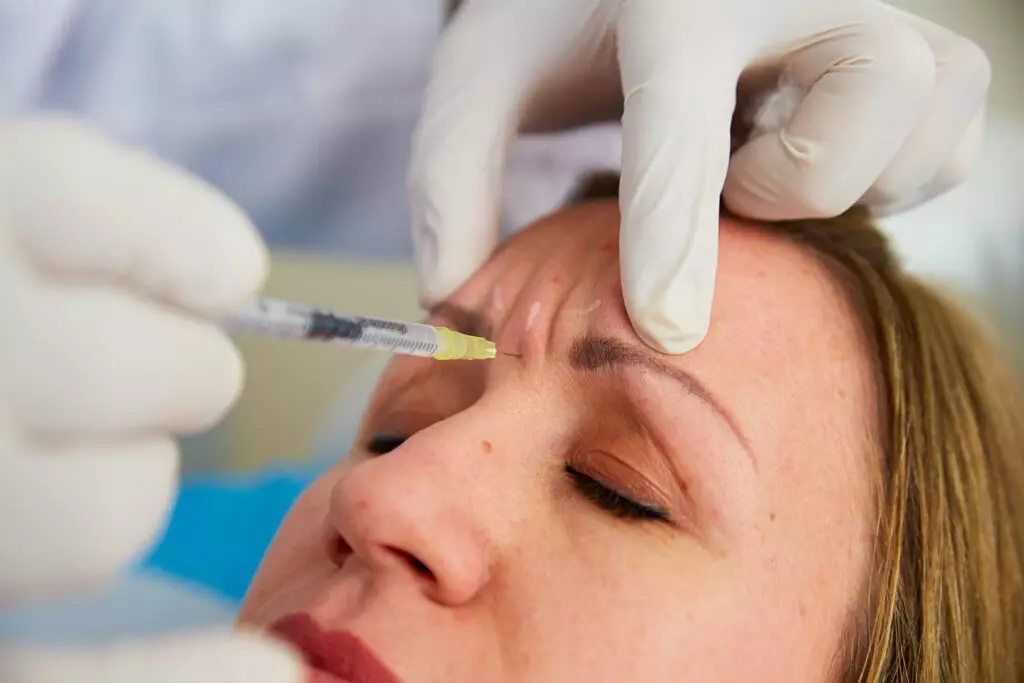
Recall that this article is a continuation of the previously started story about botulinumsone. "Everything is poison, all is a medicine. Both determines the dose, "this phrase is attributed to the famous Swiss doctor and philosopher, the forerunner of modern pharmacology of Paracelsu. Visual confirmation of his words is almost any modern drug, but one of the most striking examples is botulinumoxin.
History of "sausage toxin": from biological weapons to medication
The symptoms of food botulism for the first time described in detail in 1817 the German doctor and poet Justinus Kerner. He guessed that a certain toxin leads to the paralysis of muscles in patients, and suggested that this poison could be used for therapeutic purposes. In those days, the outbreak of poisoning occurred among people who ate a blood sausage. The word "sausage" sounds in Latin as Botulus, so scientists called a new disease botulism.
In 1895, Belgian bacteriologist Emil Van Ermenghem studied another flash of poisoning in the town of Elzeleles. 34 Musicians played the funeral, after which they had lunch at the hotel. Soon they had violations of vision, general weakness, problems with swallowing, speech, shortness of breath. During the week, three musicians died. The reason for presumably became poor-quality ham. Investigating this incident, Emil Van Ermengem first discovered the botulinum wand Clostridium Botulinum and studied it toxin. It became clear that this is one of the most dangerous poisons - a dose of less than 0.05 μg may be fatal for humans.

At the beginning of the XX century, another wave of outbreaks of botulism occurred in the United States. At that time, it was already known that dangerous bacteria multiply in poorly treated canned products. It forced manufacturers to improve technology, and people began to inform about the danger of home canned food. After World War I, the botulinum toxin was mainly considered as biological weapons.
Only in the late 1960s, after almost two hundred years after Kerner's gay, botulinum was first applied as a medicinal product. This idea occurred to the American Ophthalmologist Alan B. Scottu. It introduced toxin to the eye muscles of the macaque resume to correlate the squint. The experiment was successful and soon was repeated in humans. The cosmetology effect of drug-based drugs was found randomly, during use in ophthalmological practice. In 1989, the new drug was approved in the United States for the treatment of blefarospasm, strabismus and facial nerve dysfunction. Began the era of botulinitherapy.
How does botulinum-toxin work?
Botulinical toxin is a unique drug, and not only because it is the most dangerous poison. Only in a few drugs, the mechanism of action was so well studied before the start of clinical use, and few so strongly were able to improve the condition of patients.
The excitation of nerves to the muscles is transmitted through special structures - synapses. They are narrow slits between neuron membranes and muscle cells. In the nervous end contains special bubbles with a molecule-carrier (mediator) - acetylcholine. When nerve is excited, the acetylcholine goes into the synaptic slit and interacts with the receptors on the muscle cell membrane. In the muscle arises excitement, and it is reduced.
The botulinum toxin is connected to the nervous end membrane and blocks the outlet of acetylcholine. As a result, the excitement does not pass, and the muscle cannot perform their work. Toxin strikes motioneons in the front horns of the spinal cord and cranial nerves, which innervate transverse (skeletal) muscles, as well as a wandering nerve, innervating smooth muscles in the internal organs. In case of poisoning, the work of the most active muscles is the strongest: glazing, pharynx and larynx, as well as respiratory.

Hence the main manifestations of the disease - the blurredness of vision, bias in the eyes, violation of the reaction of the pupil into light, problems with swallowing, speech, breathing. When the botulinum toxin acts on the muscles that initially worked fine, it damages and causes states life-threatening. Incompassionable benefits begins where there are pathological muscle contractions.
There are seven types of botulinum toxin produced by different serotypes of clostridy. They are denoted by Latin letters a, b, c, d, e, f and g. It is best understood and most widely used in clinical practice toxins A and B. Currently, pharmacological properties and the possibility of using toxins C, D and F. are actively studied.
Therapeutic botulinum-toxin is obtained in a laboratory directly from the Clostridium Botulinum bacteria. It is purified, spilled in vials and subjected to lyophilization - a special type of drying, when the drug is frozen, and then the pressure is strongly reduced, as a result of which the water immediately turns into steam.
In this state - in the form of a powder - toxin is packaged and sent to the clinic. Before use, the drug needs to be diluted with saline. The doses of botulinum are measured in the so-called mouse units. One mouse unit includes such a drug that kills half mice weighing 20 grams within three days after injection into the abdominal cavity.
"Magic bullet"
About a hundred years ago, German doctor, immunologist and bacteriologist Paul Erlich introduced the term "magic bullet" into use. He dreamed of creating a medicine that would itself find the cause of the disease and destroyed it, without harming the body. Erlihu managed to realize his idea - he created the first antibacterial drugs in history - sulfonamides. Since then, many "magic bullets" appeared in medicine. One of them was botulinumoxin. He helped improving the state of many people suffering from ophthalmological and neurological disorders.

The first recognition among neurologist-neurologists botulinople was obtained due to its effectiveness in dystonia. These diseases are characterized by persistent uncontrolled muscle contractions, as a result of which the patient performs involuntary movements, its body takes an unnatural position. This group includes such pathologies as blefarospasm - a reduction in the circular muscle of the eye; hemifacial spasm or periodic violent reduction of musculature half of the person; The cervical dystonia is a reduction in the cervical muscles, which leads to the deviation of the neck from the normal position, focal dystonia limbs - spasms in certain muscle groups or legs.
No less effective botulinum toxin showed itself when combating spastic disorders - pathological tension of the muscles, which occurs in children's cerebral paralysis, multiple sclerosis, eliminating the effects of stroke, brain injuries, spinal cord damage. Especially useful these drugs were for children with cerebral paralysis.
They helped restore the functions of the musculoskeletal system, to avoid serious orthopedic problems and the need for surgery, returned the possibility of normal development of the child. Botinotherapy in spastic disorders is particularly effective in combination with other drugs, medical gymnastics, massage and physiothereders.
Botulinumoxin today
Currently, the injections of botulinumoxin are used as the main treatment in most patients with focal (in one body area) and segmental (in adjacent regions) dystonia. Already the first clinical studies whose results were published in 1987, showed high efficiency of these drugs. For example, with blephaline, the condition has significantly improved in 90 percent of patients. Side effects arose in less than ten percent of cases, they were not dangerous and passed within two weeks.
In Russia, the domestic drug based on botulinum, produces an enterprise NPO Microgen at the full cycle of the Nazimbio Holding of the State Corporation Rostex. Its development began in 2001. Distinctive features of the drug is a high degree of purification, thanks to the use of modern technologies for multiple barbecue and gel chromatographic separation, and high duration of exposure.
Today the drug is successfully used to combat muscle spasms for porch and after stroke, blefafarpasm and axillary hyperhydrosis. The Russian drug passed all the necessary clinical trials. Its efficiency and security have been proven by many years of practice. Now the company continues to work on expanding the indications for the use of Russian botulinum toxin in the neurological region.
In addition to all the above directions, there is evidence of the effectiveness of botulinity with various types of headaches. Among them, for example, a migraine is a disease in which intensive pains in half of the head are bothering, they are often accompanied by nausea, vomiting, increased sensitivity to light and sounds. Another type is the so-called tension headaches, which, according to some data, are among the ten most common causes of disability (one of the factors contributing to their development is the tightness of the muscles of the skull).
Cervicogenic headaches arise as a result of a long stay in an inconvenient position, with certain head movements, and against them is also effective "therapeutic poison." The botulinum toxin acts not only on the nerves, innervating skeletal muscles, but also on the autonomous nervous system, which manages the operation of internal organs, of various glands. This property also finds therapeutic application.

For example, intradermal administration of botulinum cellin is helped with essential focal hyperhydrosis - increased sweating in the field of palms, feet, armpits. This disorder suffer from 3 to 15 percent of people. It is not amenable to treating other drugs, and operations, during which the sympathetic nerves cut are accompanied by high risks. Many pain syndromes in the human body are associated with chronic muscle spasms, and botulinum can also be effective. First of all, these are states such as fibromyalgia, myofascial pain syndrome, chronic lower back pain, the temporomandibular joint.
Earlier on one of the interdisciplinary conferences "Weinovsky readings" Doctor of Medical Sciences, Professor of the Department of Surgery Diseases of Children's Age FGBOU in SPbgpm of the Ministry of Health of Russia Diana Krasavina, exploring the effectiveness of botulinity for the relief of spasticity and chronic painful syndrome in children with cerebral palsy, noted: "Spasticity and pain Go together. The earlier we create the injection of botulinity therapy into spastic local muscles, the less chances we will give pain. "
The botulinum toxin acts not only on the nerves, innervating skeletal muscles, but also on the autonomous nervous system, which manages the operation of internal organs, of various glands. This property also finds therapeutic application. There are cases when, with the help of botulinum, Salorore (saliva) was successfully treated with Parkinson's disease, lateral amyotrophic sclerosis and other neurodegenerative disorders.
The effectiveness of the pathologies associated with muscle spasms in the internal organs - for example, the rectum (anism is resistant constipation due to sphincter spasm, the cracks of the rectum), the bladder (urine delay due to spasm). Preparations of botulinum toxin are applied in neurology more than thirty years, but their potential has not yet been exhausted. Scientists continue to explore them and open new testimony.
Source: Naked Science
